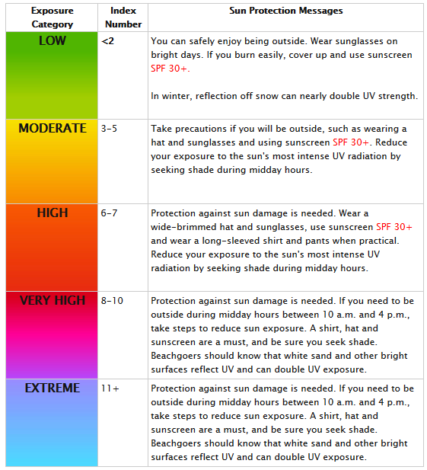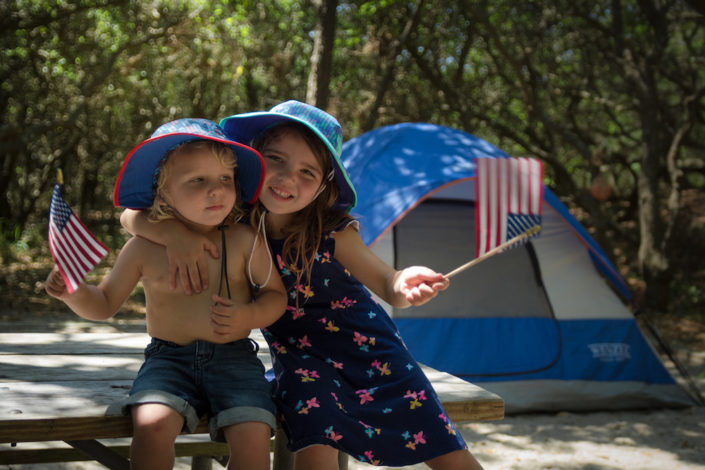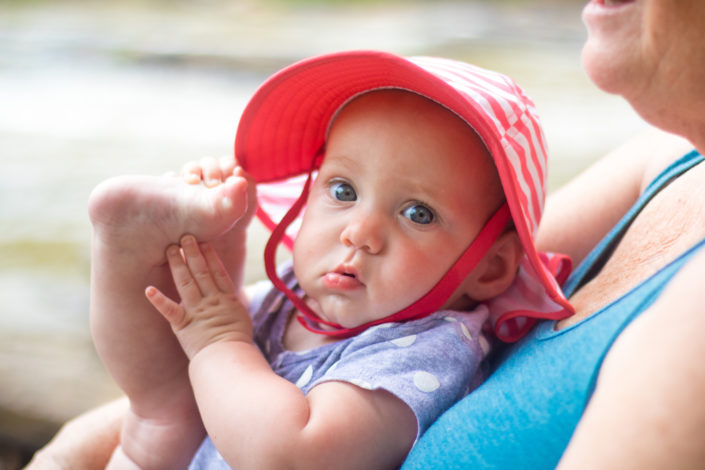Sun Protection: Don't Forget Your Hat
With Daylight Saving approaching, it's another reminder that this wild winter weather will soon be behind us. And while some may wish to shed their translucent winter glow by seeking the tanning effects of the sun, this may not be the best choice. While the warming temperatures mean we get to shed some layers, it also means that radiation from the sun is increasing. But why does this matter? And what can we do to protect ourselves and our family against harmful UV rays?


 Just remember that following these tips can help make the transition from building snowmen to seeking out wildflowers to frolicking on the beach fun and safe for the whole family! And in the nagging (er, I mean "loving") words of moms everywhere, “always use sunscreen and don’t forget your hat!”
What tips or hacks do you have for staying safe in the sun? Let us know in the comments below!
Just remember that following these tips can help make the transition from building snowmen to seeking out wildflowers to frolicking on the beach fun and safe for the whole family! And in the nagging (er, I mean "loving") words of moms everywhere, “always use sunscreen and don’t forget your hat!”
What tips or hacks do you have for staying safe in the sun? Let us know in the comments below!

The UV Index
The UV index was created in 1994 as a way to inform people of the risk of ultraviolet radiation exposure when planning outdoor activities. The index ranges from 1 (the lowest exposure) to 11+ (the highest exposure) and you can read more about it in this graphic from the EPA. The level of radiation that reaches the earth varies based on various factors such as altitude, cloud cover, Earth surface characteristics, season and time of day. During the spring and summer months, Earth tilts toward the sun so more of the sun’s radiation reaches Earth. In addition, when the sun is directly overhead (around midday), there is less atmosphere for the radiation to penetrate, which increases the amount of radiation. Thankfully, there are tons of smart phone apps and websites that list the UV rating by time of day and meteorologists usually provide this information on the news. Why should we care about solar radiation? Because keeping your family's skin unprotected can lead to a myriad of problems down the road. According to the EPA, while some people are more vulnerable than others (my super fair skin is like a beacon for radiation, I can burn within minutes!), everybody, regardless of race or ethnicity, is subject to the adverse effects of overexposure to the sun.Short-term effects of overexposure
- Sunburn: The most obvious result of too much sun exposure is sunburn. It can involve tenderness, blistering, swelling, fever and nausea on top of the obvious reddening of the skin.
- Sun sensitivity: Did you know that you can have an allergic reaction to the sun? It is more common than you think and can include bumps, hives, blisters and red blotchy areas on exposed skin. Some medications and perfumes can also result in sun sensitivity.
Long-term effects of overexposure
- Premature wrinkling: Up to 90% of observable skin changes are actually caused by sun exposure as opposed to aging. This includes changes in skin texture (aka “leather” skin) and discolorations in skin tone (brown spots, red spots, etc.).
- Eye damage: One of my son’s favorite Dr. Seuss books has the line “But be careful and never look right at the sun. Your eyes would get hurt, and that would not be fun!” Science backs up good ol’ Dr. Seuss on this one. Excess exposure to UV radiation can cause a burn on the corneas of your eyes (ouch!), and long-term exposure can lead to issues such as cataracts and macular degeneration.
- Suppression of immune system: Regardless of your skin type or susceptibility to burns, excessive sun exposure can suppress the immune system, making the body more susceptible to infections and cancer.
- Skin cancer: Last but not least, UV radiation causes genetic mutations in skin cells, which can develop into skin cancer over time with continued sun exposure (especially continued overexposure and sunburn). The most common places that develop skin cancer are also the most commonly exposed areas of the body that don't get adequate sun protection: the neck, ears, face, forearms and hands. For more information on how to spot skin cancer, check out this helpful information from the American Academy of Dermatology.

Tips for protection
Here at Hike it Baby, we believe in the power of nature play and getting outside as often as possible. So what can we do to enjoy the outdoors safely? I called in an expert to find out: my mother, who workedas a registered nurse in a dermatology office in Colorado where I grew up. The two things she would drill into our heads were “always use sunscreen and don’t forget your hat!” After I got sunburned on my nose and scalp multiple times, even during the winter months, I knew she was on to something. We lived at 7,000 feet elevation where sun protection is especially important. Therefore, I consulted her expertise to compile this list of tips to help you keep your family safe from the harmful effects of the sun.- Use sunscreen on all exposed skin: The American Academy of Dermatology recommends looking for a sunscreen that has three main components: Broad-Spectrum (protects against UVA and UVB rays), water-resistance and an SPF rating of 30 or higher. For infants and children, mineral-based sunscreens (containing titanium oxide or zinc dioxide) are generally more appropriate since they are less likely to irritate the skin. Just remember to reapply every two hours or right after swimming or excessive sweating!
- Wear a quality hat: By far the most important article of clothing you can use to protect against damaging sun radiation is a hat. The ears, neck and face are three of the most common areas that can develop skin cancer, so be sure to cover them with a brimmed sun hat. That being said, not all hats are created equal. Companies like Sunday Afternoons go above and beyond to provide hats that are both stylish and protect against harmful UV radiation with a protective rating of UPF 50+ on all of their sun hats. UPF 50+ is the highest sun-protective rating achievable and means that only 1/50th or less of UV rays are able to pass through. To top it off (pun intended), Sunday Afternoons offers hat styles with cool features such as convertible ventilation to switch from full coverage to fantastic air-flow, sunglass lock to keep your sunglasses in place on your hat, and they even have styles that are reversible. (Two hats for the price of one?! Yes, please!) My extremely sun-conscious mother loves their hats, and she is currently sporting the Quest Sun Hat on her outdoor adventures in sunny Colorado. With sizes ranging from infant to adult, you can’t go wrong with this company for outfitting the whole family with sun-safe hats!
- Wear sunglasses: Look for sunglasses that provide 100% UV protection for the whole family.
- Consider sun-protective clothing: Is sunscreen not really your thing? Or maybe your child is like mine: a whirlwind of activity and nearly impossible to wrangle when he’s having fun in the sun. Attempting to reapply sunscreen at the recommended intervals can be a monumental task when dealing with a wiggly child who doesn’t want to stop what they’re doing so that you can slap another layer of sunscreen on them. You can invest in breathable clothing that completely covers the body and utilizes fabrics that block the majority of the sun's radiation (usually with a rating of around UPF 50). Just remember that you still need to apply sunscreen on any exposed skin.
- Consider your timing: The UV index is generally strongest during midday (between 11 a.m.-4 p.m.). At these times, especially in late spring and summer, the damaging effects of the sun are strongest and hardest to avoid. In other words, planning a hike that starts at noon in the middle of summer in an area that has little shade is likely a poor choice. If being outside when the UV index is hitting extreme levels (11+), be sure you take protective measures and seek shade whenever possible.
- Sun care for infants: Babies are especially susceptible to the harmful effects of sun exposure, and taking the above precautions is a must! In addition, an umbrella or the hood of a stroller make great shade since sunscreen isn't recommended on babies under 6 months old. However, if your baby will be exposed to the sun for a longer period of time, apply a small amount of sunscreen to the exposed areas of the child’s skin.
 Just remember that following these tips can help make the transition from building snowmen to seeking out wildflowers to frolicking on the beach fun and safe for the whole family! And in the nagging (er, I mean "loving") words of moms everywhere, “always use sunscreen and don’t forget your hat!”
What tips or hacks do you have for staying safe in the sun? Let us know in the comments below!
Just remember that following these tips can help make the transition from building snowmen to seeking out wildflowers to frolicking on the beach fun and safe for the whole family! And in the nagging (er, I mean "loving") words of moms everywhere, “always use sunscreen and don’t forget your hat!”
What tips or hacks do you have for staying safe in the sun? Let us know in the comments below!
Read More:
Photos by Molly Porzel and Stephanie Jacobson.Related Content




Comments